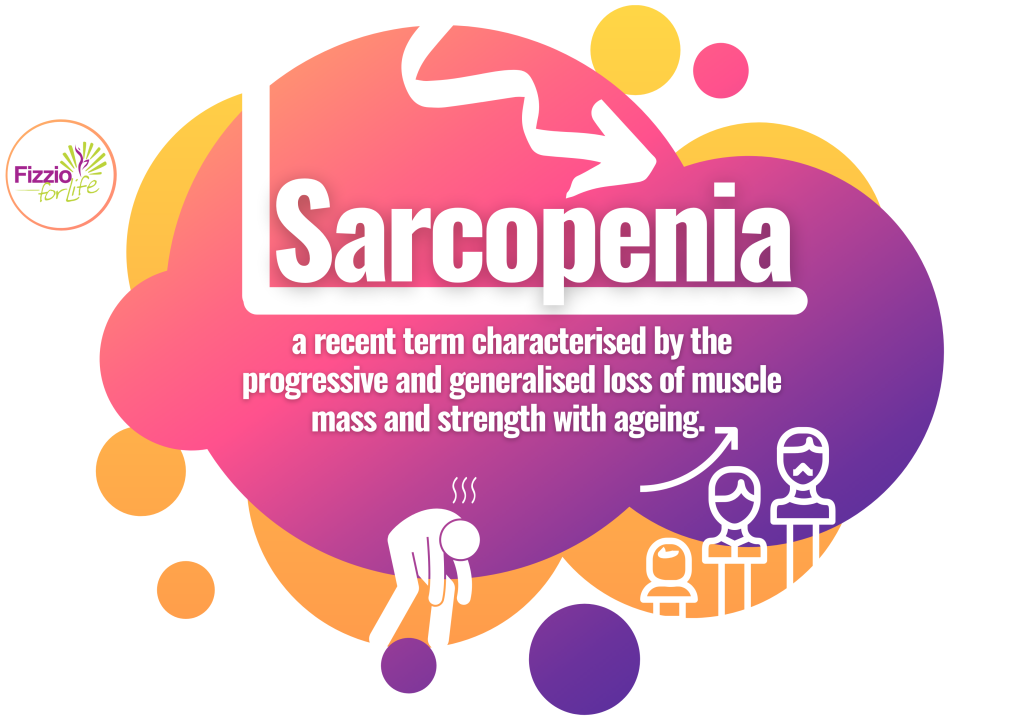
As we age we may find ourselves slowing down and the “easy” things we used to do aren’t so “easy” anymore.
Ageing brings with it a multitude of change to our body, one of which is known as Sarcopenia.
Sarcopenia is only a recent term and is characterised by progressive and generalised loss of muscle mass and strength with ageing.
This decrease comes with increased risk of adverse outcomes such as physical disability, poor quality of life and increased mortality.
Sarcopenia can be broken down into characteristics such as muscle mass (amount of muscle), strength (how much we can do), and power (how fast we can do something). Research is growing in this space as our population ages along with better improved healthcare to greater understand the mechanisms behind the changes. Sarcopenia is strongly linked to increased falls risk which has a large burden on our healthcare system.
A study in 2019 by Suetta C et al. J Cachexia, titled Sarcopnia and Muscle noted:
- Muscle Mass: 20% decline from 50-60yrs
- Strength: 40% decline from 50-60yrs of age, accelerated from 75yrs
- Gait Speed: 35% decline from 65-70yrs
- Muscle Power: 60% decrease from 50yrs.
The rate at which we decline is dependent upon factors such as exercise level, comorbidities and nutrition. The degree of Sarcopenia is therefore determined by two factors which are the initial amount of muscle mass and the rate at which it is declining. Additionally immobility dramatically increases the rate of muscle mass, even in younger people, so keeping active at all stages of life is important.
The changes to muscle mass, strength and power have a direct influence on the ability for individuals to complete activities of daily living as we age. These changes can directly affect our mobility, specifically our speed of moving which correlates with increased risk of falling as well as our quality of life and independence. Regular exercise and continued physical activity is a proven way to combat Sarcopenia at any age of life. Increasing muscle mass at any time in life sets you to have a higher starting point, and continuing to exercise as we age reduces the rate at which we decline.
Resistance exercises, or weight training, is shown to increase our muscle mass as well as increasing strength. No matter what level we start at we are able to progressively overload our muscles to continue to adapt bigger and stronger than before. Furthermore, the addition of power movements, which conventionally are movements completed with some speed, can help address our deficits in power. This could be a jumping type movement or something more simple like a step up depending on the initial level of strength. This form of exercise also has a positive effect on bone health as well as falls prevention, which are all linked with Sarcopenia. Exercise really is medicine when it comes to Sarcopenia.
If you are interested in learning more about what specific exercises could help you decrease the risk of Sarcopenia, our Exercise Physiologists would be more than happy to design a program that is tailored to your individual needs. Contact us to arrange an appointment.

